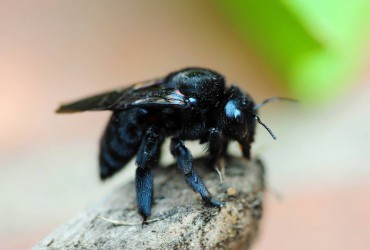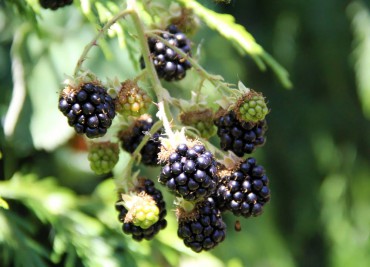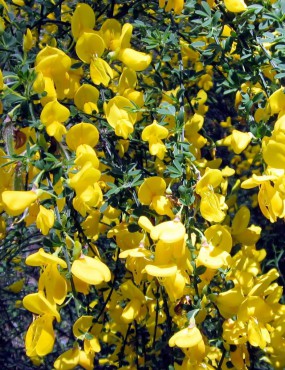 Carpenter Bees
Carpenter Bees
Recently at breakfast, I overheard someone talking about carpenter bees. Most people have heard about carpenter ants but carpenter bees were a new one to know.
This person had inherited a deck that had been built with old, untreated and unpainted scrap wood. While sitting out on his deck, he noticed these small bees busily working away. He wanted to investigate and saw that the whole deck, both decking on top and wood on the underside, had channels running everywhere that the bees had chewed away and taken the chewed-out materials back to their nests.
This is a very good time of year to monitor around foundations. Look carefully at your decks and siding and also look under the house, ensuring there’s no damage being done by carpenter bees or carpenter ants. Also check any woodpiles or wooden fencing near your home.
Carpenter bees are in the genus Xylocopa. Xylocopa is a Greek word meaning “wood cutter.”
There are more than 730 species of carpenter bees. They are often mistaken for bumblebees. If you have the opportunity to look closely, you’ll see that bumblebees have very hairy abdomens but the carpenter bees have smooth, hairless abdomens. Most carpenter bees are black and they have a metallic sheen to them.
The local variety is possibly the mountain carpenter bee Xylocopa tabaniformis or perhaps X. californica. They usually nest in tree trunks and old wood on the outskirts of neighborhoods. But they especially like rotting decking and cedar that has not been stained. They are not known to sting but you will want to be careful not to disturb them too much.
The females are about 1 inch long and both males and females resemble each other. According to the everythingabout.net website, “When female carpenter bees construct tunnels in solid wood, their chewing of the wood can be heard from several feet away. Piles of sawdust beside the nest entrance and the presence of many bees in flight in the area provide clues that a nest is near. Brood cells (compartments for offspring) are constructed in the tunnels. The cells are separated by partitions made from sawdust or wood chips cemented together with saliva.”
Carpenter bees are also quite valuable in pollination. They, too, visit thousands and thousands of flowers to gather pollen to nourish their offspring. With honeybee decline, carpenter bees are helping to fill an important niche in pollination.
Rarely will you have to eradicate or control the carpenter bee population. In fact, you may rarely see them. If you do encounter a problem with carpenter bees, it’s best to consult a licensed local pest control business.
Growing Winter Veggies and Cover Crops
July and August is the time to plant seeds or starts of winter crops. They’ll have several months to grow good, healthy roots and upper structures for harvesting in the winter and some even into early spring.
Great crops to put in now are carrots, beets, broccoli, kale and chard, and you can direct-sew some wonderful crops of lettuces every few weeks to have salad greens up until it starts freezing. Carrots, beets and kale sweeten up when temperatures drop down near or at freezing. Some gardeners even leave carrots and beets in the ground for storage purposes.
If you have some empty beds you plan not to plant up until next year, this is the perfect time to sow cover crops. Temperatures are just right for seed germination. Many local nurseries carry cover-crop seed mixes. Many seed mixes can just be sprinkled on top of the soil and raked in. Depending on our temperatures and rainfall, cover crops can be sown even through September, but earlier is a bit better for maximum germination.
Cover crops are also good for starting a new garden bed area, whether it is for landscaping or growing food. Dig up the area, possibly even rototilling, and then sow the crops in. You’ll be making what’s called “green manure” for digging in during the spring. As the tilled-in cover crops break down, turning into organic matter, they will nourish the soil with wonderful, nitrogen-rich fertilizer.
 Blackberry Control
Blackberry Control
Alas, it seems blackberries will always be with us. And, yes, many gardeners keep them around for the delicious pies, jams, jellies and other tasty treats the berries provide. But these thorny beasties can be an absolute nuisance in yards and gardens.
In early spring, as new, much smaller young sprouts emerge, they can be pulled up quite easily; older vines are just starting to leaf out and can be chopped back and removed.
But if you don’t tackle them when they’re young, they grow quickly and profusely. The birds that have eaten the berries later in the year begin depositing seeds everywhere with a bit of manure and before you know it, the blackberries are conquering your own bit of heaven. In addition, anywhere the old vine touches the ground, new plants are rooting in. This is not a good thing.
Mowing and chopping the blackberries in open fields works quite well. But digging and rototilling often just encourages them to grow more profusely — every small bit can often resprout. The trick is to keep the plants cut back as often as possible and eventually they’ll run out of energy to continue growing. But this takes a long time.
If you do decide to use an herbicide, follow the directions completely and be sure to read and understand all the cautions and warnings. Be aware of the danger to animals including birds, bees, beneficial insects, pets and fish nearby. Just because a commercial or a label says it’s a good thing and just because it’s an “organic” product does not mean you can safely use many of the products on the market.

Know, too, that herbicides work best when plants have been cut back and allowed to begin resprouting, and usually on a warm or hot day. This method gives maximum possibilities for the plant to drink in the herbicide down to its roots, where it can do its eradicating work. This process most often needs repeating for several years for complete control.
The links provided in this column offer some good information on how to control blackberries. Good luck.
Noxious Weeds
You’ll also notice many of the noxious weeds throughout the region. Please visit the reference links to learn about noxious weeds in your area, how to control or eradicate them and whom to contact. You’ll find photos and good information on what to do if you find noxious weeds on your own or neighboring property.
Carpenter ants, moisture ants and termites will be discussed in the Sept/Oct 2015 Get the Dirt column.
































Comments